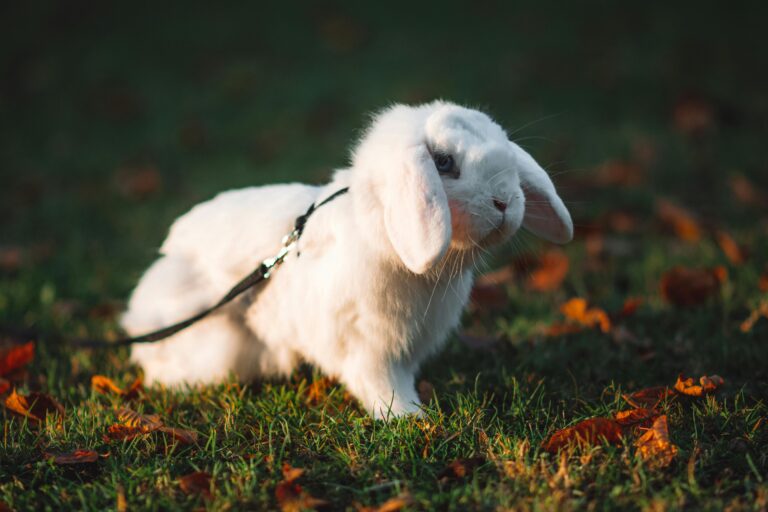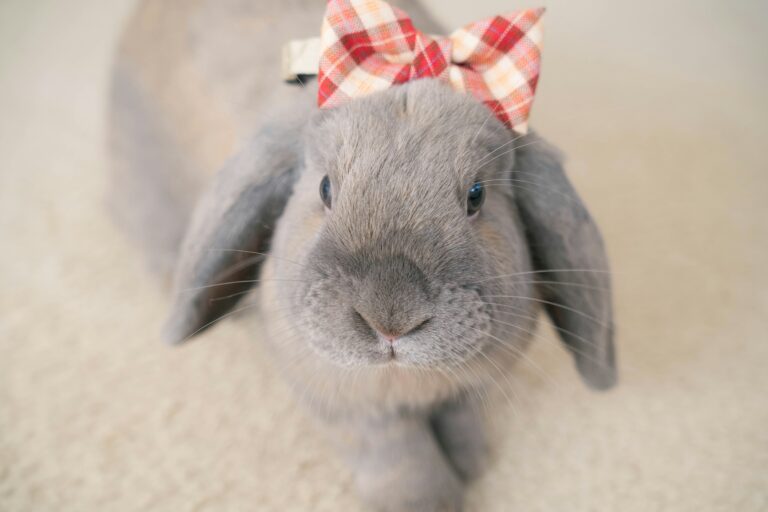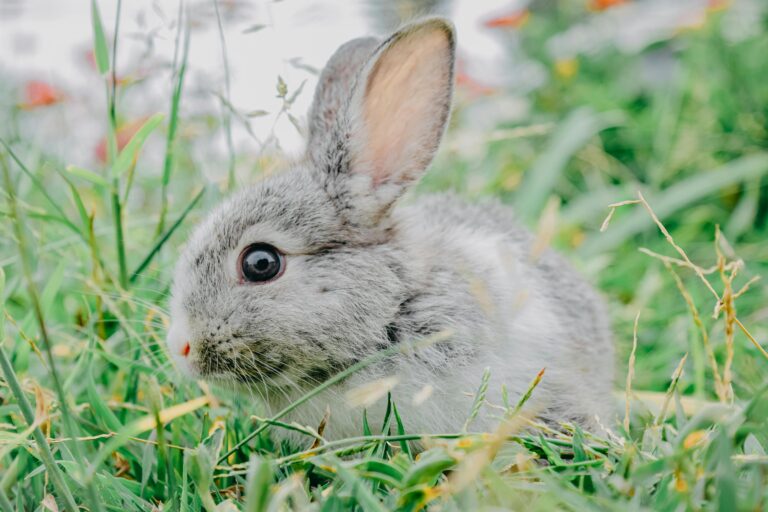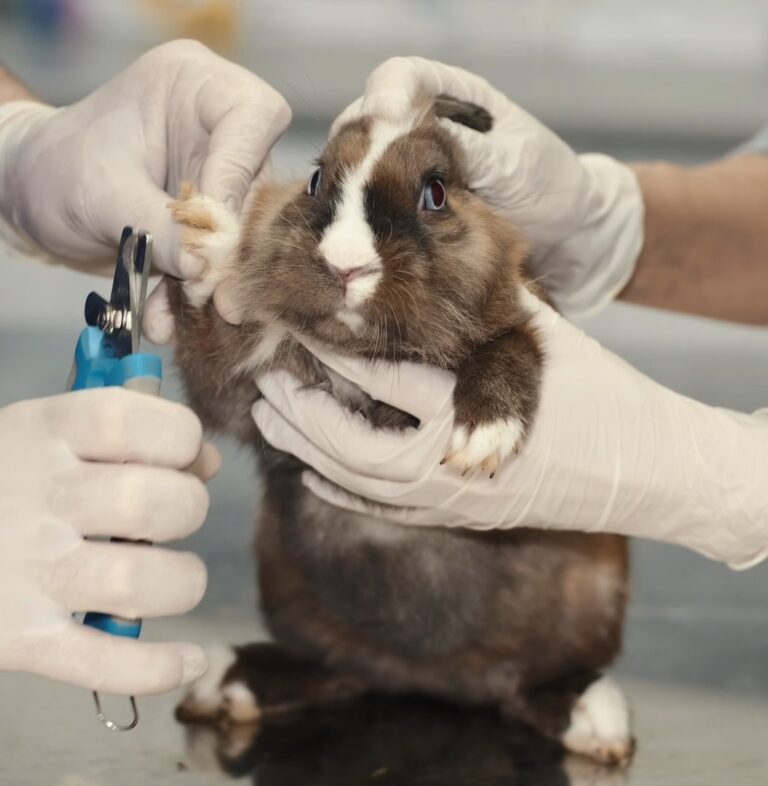Rabbit Care 101: A Guide for New Owners
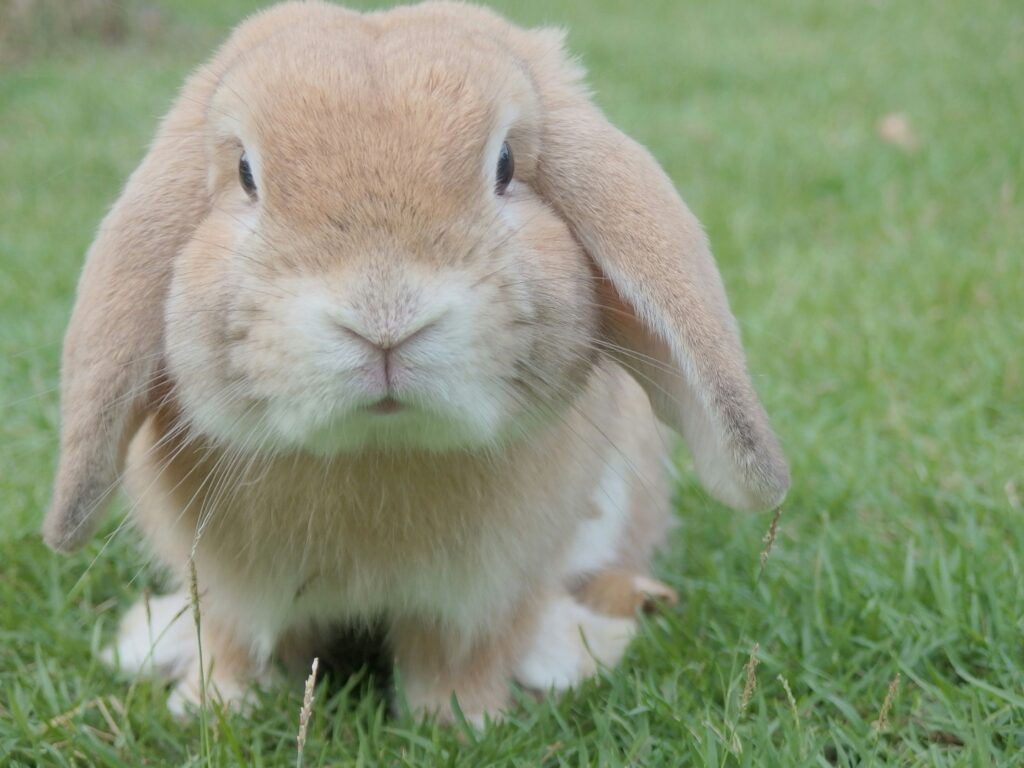
Welcoming a rabbit into your home is an exciting and rewarding experience! Rabbits are gentle, intelligent, and social animals that can make wonderful companions for individuals and families alike. However, providing proper care for a rabbit requires knowledge, dedication, and a commitment to meeting their unique needs.
In this guide, we’ll cover everything you need to know to ensure the health, happiness, and well-being of your new furry friend, from setting up their habitat to understanding their dietary and behavioral needs.
Understanding Rabbit Behavior
Rabbits are complex creatures with distinct behaviors and communication methods. Understanding their behavior is crucial for building a strong bond and providing appropriate care.
Social Nature: Rabbits are social animals that thrive in the company of other rabbits. While they can form strong bonds with humans, they also benefit from the companionship of another rabbit. Consider adopting a pair to provide social interaction and prevent loneliness!
Communication: Rabbits communicate through a variety of behaviors, including body language, vocalizations, and actions. Some common forms of communication include thumping, grooming, teeth grinding, and binkying (joyful jumps)! Learning to interpret these cues will help you better understand your rabbit’s needs and emotions.
Setting Up Their Habitat
Providing a suitable habitat is essential for your rabbit’s physical and mental well-being. Here’s what you need to consider when setting up their living space:
Cage Size: Choose a spacious cage or enclosure that allows your rabbit to move around freely. Recommended cage size greatly varies greatly based off the size of your rabbit. The recommended minimum cage size for a dwarf rabbit like a Netherland Dwarf is 24 inches wide by 24 inches tall by 36 inches long, but for a giant breed like a Flemish Giant, the recommended minimum cage size is 36 inches wide by 24 inches tall by 48 inches long. Keep in mind though that this is the minimum amount of space a rabbit can live in healthily and it is much better to provide your rabbit with an enclosure that provides them with as much space as possible. Rabbits love to run and jump, and minimum sized cages do not provide them with the necesary space to do that.
Bedding: Use safe and absorbent bedding material such as hay, straw, or paper-based bedding. Avoid cedar or pine shavings, as they can be harmful to rabbits’ respiratory systems. If using a wire cage that allows waste to drop through, bedding may not be used because it could also drop though, but a carpet square, small blanket, or towel should be placed in the cage to allow the rabbit to sit on something soft. If your rabbit spends most of its time sitting on wire, it may develop a painful condition called sore hocks.
Accessories: Provide essential accessories such as a water bottle, food dish, litter box, and hiding spots. Include toys and enrichment activities to keep your rabbit mentally stimulated and prevent boredom. Some popular toys include chew toys, tunnels, balls, and puzzle feeders.
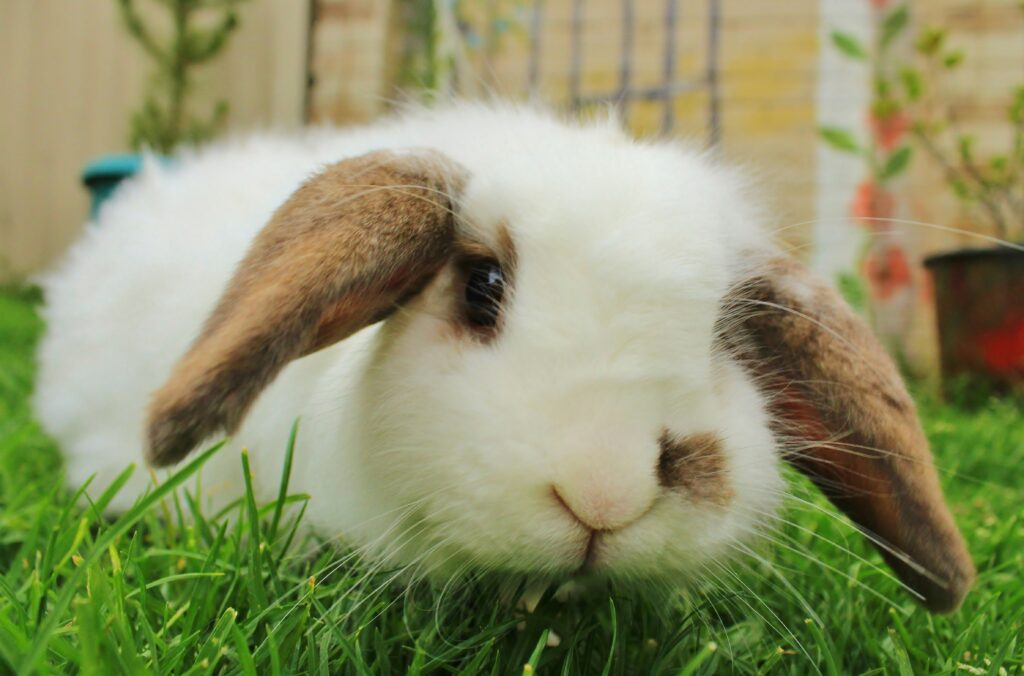
Providing a Nutritious Diet
A balanced and varied diet is crucial for your rabbit’s health and well-being. Here’s what you need to know about their dietary needs:
Hay: The foundation of a rabbit’s diet should be high-quality grass hay, such as timothy, orchard grass, or oat hay. Hay provides essential fiber for digestion and helps wear down their teeth, which continuously grow throughout their lives.
Pellets: Provide a limited amount of high-quality rabbit pellets in the recommended quantity for your rabbit’s weight. Look for pellets that are high in fiber (18-22%), low in protein (12-14%), and contain no added sugars or artificial ingredients. Pellets should make up no more than 5-10% of your rabbit’s diet and should be fed in moderation.
Fresh Greens: Offer a variety of fresh vegetables and herbs to supplement your rabbit’s diet. Safe options include leafy greens (e.g., kale, spinach, romaine lettuce), herbs (e.g., parsley, cilantro, basil), and vegetables (e.g., bell peppers, celery, cucumber). Introduce new foods gradually to prevent digestive upset and avoid feeding fruits or vegetables high in sugar.
Fresh Fruits: Fresh fruits such as apple, strawberry, or banana can also be fed to your rabbit, but they should only be fed as occasional treats to prevent obesity and other health issues.
Exercise and Enrichment
Rabbits are active animals that require plenty of exercise and mental stimulation to stay healthy and happy. Here’s how to provide them with opportunities for physical activity and enrichment:
Enclosed Play Area: Create a safe and secure area where your rabbit can roam and explore outside of their cage. Use baby gates or exercise pens to block off a designated play area and supervise your rabbit closely to prevent accidents or escapes.
Toys and Activities: Provide a variety of toys and enrichment activities to keep your rabbit mentally stimulated and physically active. Some popular options include cardboard boxes, tunnels, balls, and puzzle feeders. Rotate toys regularly to keep things interesting and prevent boredom. Check out our guide here if you want to learn more about rabbit toys!
Outdoor Time: If the weather permits, allow your rabbit to spend time outdoors in a secure enclosure or supervised playpen. Make sure the area is free from hazards such as toxic plants, sharp objects, or predators, and provide shade and fresh water to keep your rabbit comfortable.
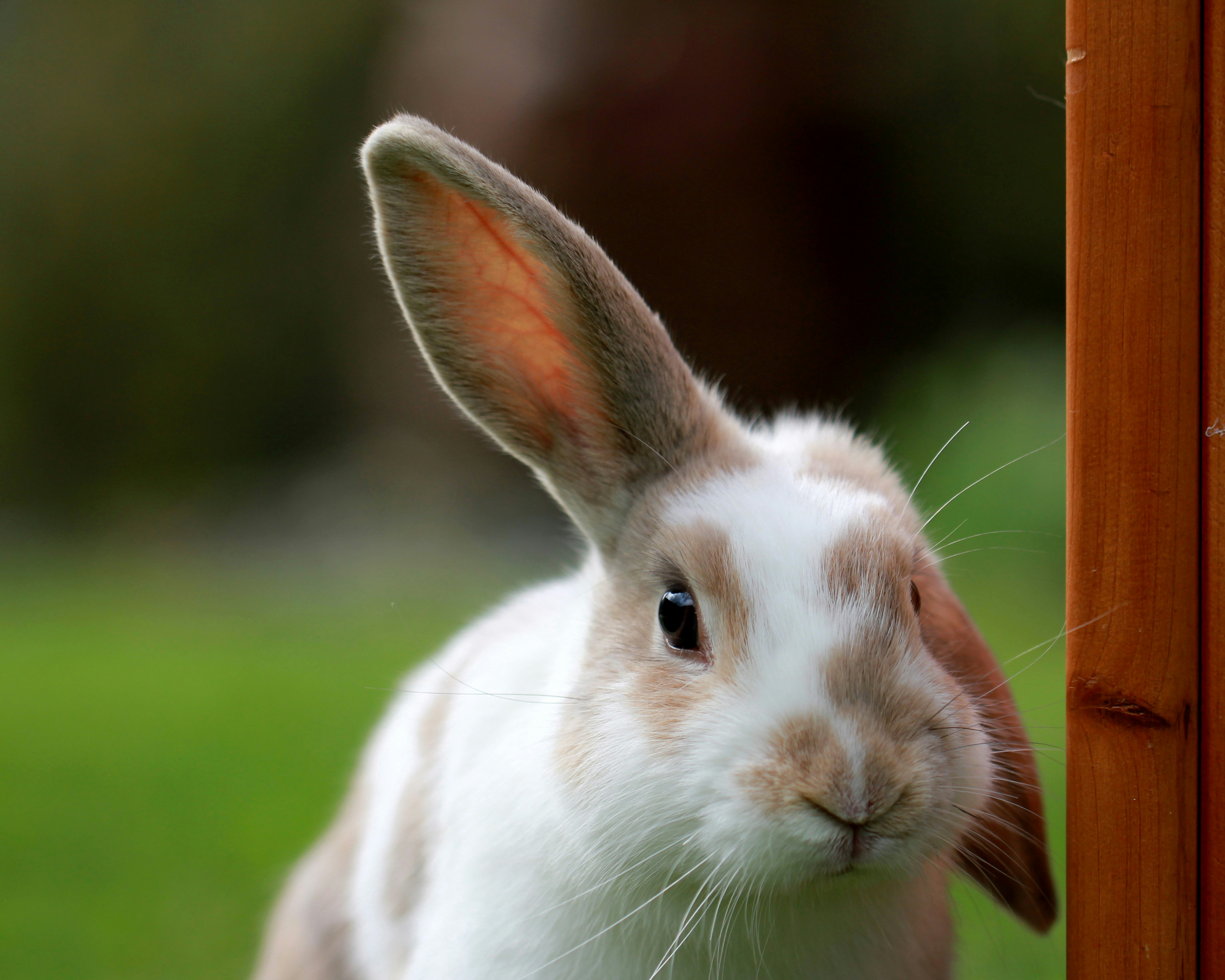
Grooming and Hygiene
Regular grooming is essential for keeping your rabbit’s coat healthy and preventing matting and shedding. Here’s what you need to know about grooming and hygiene:
Brushing: Brush your rabbit’s fur with a soft-bristled brush or grooming mitt at least once a week to remove loose fur and prevent matting. Long-haired breeds may require more frequent grooming to keep their coats tangle-free. Check out our guide to grooming long-haired rabbits here!
Nail Trimming: Trim your rabbit’s nails every 4-6 weeks to prevent them from becoming overgrown and causing discomfort or injury. Use a pair of pet nail clippers and be careful to avoid cutting the quick, which contains blood vessels and nerves. Check out our guide to trimming nails here!
Dental Care: Dental health is essential for rabbits, as they have continuously growing teeth that can develop problems if not properly maintained. Provide plenty of hay and chew toys to help wear down their teeth naturally, and schedule regular dental check-ups with a veterinarian experienced in rabbit care.
Litter Box Training
Rabbits are naturally clean animals that can be litter trained with patience and consistency. We are including the basics of litter box training in this article but for detailed instructions on litter box training your rabbit, check out our guide here!
Preparation: Choose a litter box that is large enough for your rabbit to comfortably hop in and out of and fill it with a layer of rabbit-safe litter such as paper-based or wood pellet litter.
Placement: Place the litter box in a corner of your rabbit’s cage or enclosure where they tend to urinate or defecate. Rabbits are creatures of habit and will often choose a specific spot for elimination. Hint – try adding some hay to their litter box. Rabbits love enjoying a snack while they do their business!
Encouragement: Encourage your rabbit to use the litter box by placing some of their droppings or soiled bedding inside as a visual cue. Reward your rabbit with praise and treats whenever they use the litter box correctly.
Cleaning: Clean the litter box regularly to maintain hygiene and prevent odors. Remove any soiled litter and replace it with fresh litter as needed and clean the litter box with mild soap and water on a weekly basis.

Handling and Socialization
Building a strong bond with your rabbit is key to fostering a trusting and positive relationship. Here are some tips for handling and socializing your rabbit:
Approach with Care: Rabbits are prey animals and may be easily frightened by sudden movements or loud noises. Approach your rabbit slowly and gently, allowing them to come to you on their terms. Avoid sudden movements or reaching over their heads, as this can startle them.
Proper Handling: Support your rabbit’s body securely with one hand under their chest and the other hand supporting their hindquarters. Avoid picking them up by their ears or scruff, as this can cause injury or distress. Always lift and carry your rabbit close to your body to provide support and security.
Bonding Time: Spend time bonding with your rabbit through gentle handling, petting, and talking to them in a calm and soothing voice. Offer treats and positive reinforcement to create a positive association with handling and build trust over time. Be patient and consistent and allow your rabbit to set the pace of the interaction.
Introducing Your Rabbit to Other Pets
If you have other pets in your household, such as cats or dogs, it’s essential to introduce them to your rabbit slowly and carefully to ensure their safety and well-being. Here are some tips for introducing your rabbit to other pets:
Start Slow: Start by allowing your pets to sniff each other’s scent through a closed door or barrier. This will help them become familiar with each other’s presence without direct contact.
Watch Closely: Supervise all interactions between your rabbit and other pets closely and be prepared to intervene if necessary. It is very important to avoid leaving them alone with other pets until you are confident they can coexist peacefully, and even then, depending on your other pets it may be best to never leave them alone. A rabbit can accidentally set off a dog or cat’s predatory instincts easily, leading to injury or death of your pet. Even if not intentionally, a dog or cat can injure your rabbit by accident just by trying to play with them.
Provide Positive Reinforcement: Provide plenty of positive reinforcement and rewards for calm and respectful behavior from both your rabbit and other pets. Over time, they may learn to tolerate each other and even form friendships.

Traveling with Your Rabbit
If you need to travel with your rabbit, whether it’s for a vet visit or a vacation, proper planning and preparation are essential to ensure their safety and comfort. Here’s how to travel with your rabbit safely and stress-free:
Preparing the Carrier: Use a secure and well-ventilated carrier to transport your rabbit, preferably one with a solid bottom to prevent injury and leaks. Line the carrier with soft bedding or towels for comfort and include some of your rabbit’s favorite toys or treats to keep them occupied during the journey.
Be Mindful of Temperature: Avoid traveling during extreme temperatures or adverse weather conditions, as rabbits are sensitive to temperature changes and can quickly become stressed or overheated. Keep the carrier out of direct sunlight and away from drafts, and provide shade and ventilation as needed.
Take Breaks: Plan regular rest stops during long journeys to allow your rabbit to stretch their legs, eat, drink, and use the litter box. Offer them fresh water and a small amount of food and monitor their behavior for signs of distress or discomfort.
When You Get There: Upon reaching your destination, set up a safe and comfortable space for your rabbit to relax and acclimate to their new surroundings. Provide familiar items such as their cage, toys, and bedding, and give them plenty of time to explore and adjust!
Health Monitoring and Veterinary Care
Regular veterinary care is essential for keeping your rabbit healthy and detecting any potential health issues early. Here’s what you need to know about health monitoring and veterinary care:
Regular Check-ups: Schedule annual wellness exams with a veterinarian experienced in rabbit care. Your vet can perform a thorough physical examination, discuss preventive care measures, and address any concerns or questions you may have.
Signs of Illness: Watch for signs of illness such as changes in appetite, lethargy, diarrhea, or discharge from the eyes or nose. Other common signs of illness include difficulty breathing, tooth grinding, or hunched posture. Contact your vet immediately if you notice any concerning symptoms, as rabbits can deteriorate rapidly if left untreated.
Emergency Preparedness: Have a plan in place for accessing emergency veterinary care if needed. Keep important contact information for your vet and an emergency animal hospital readily available and be prepared to transport your rabbit safely in an emergency. Familiarize yourself with common health emergencies in rabbits, such as gastrointestinal stasis, heatstroke, and wool block, and know how to recognize and respond to them effectively.
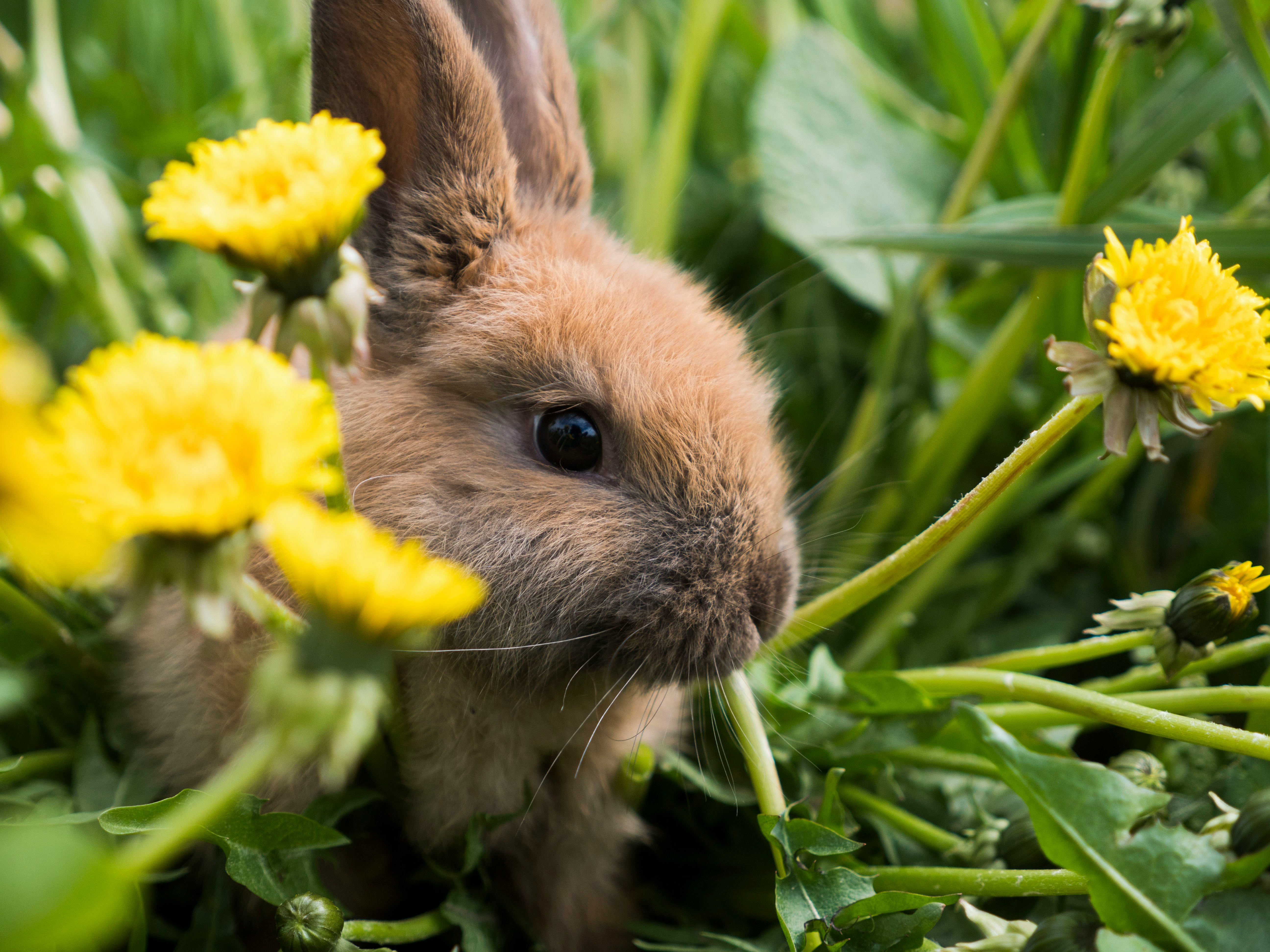
Conclusion
By following the tips and guidelines outlined in this guide, you can provide the best possible care for your rabbit and ensure a happy, healthy life for your furry friend!
Remember to approach rabbit care with patience, compassion, and dedication, and always prioritize your rabbit’s individual needs and preferences. With proper care and attention, you and your rabbit will enjoy a fulfilling and rewarding relationship for many years to come!


